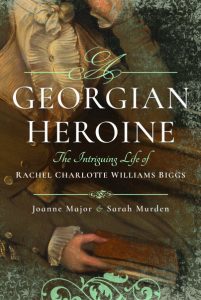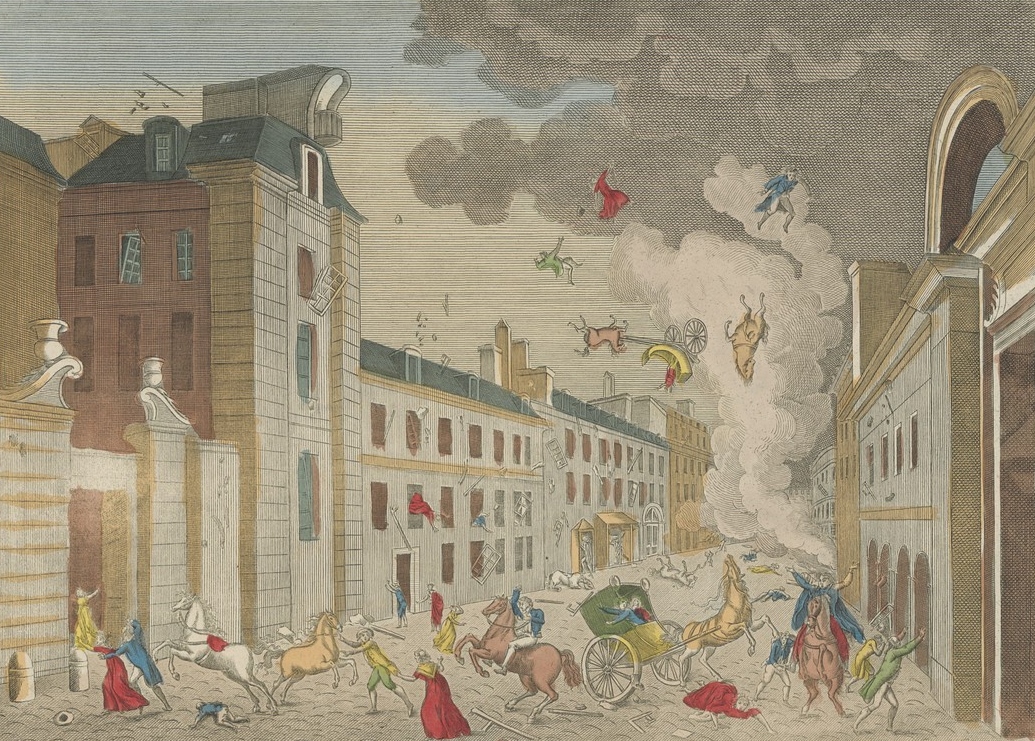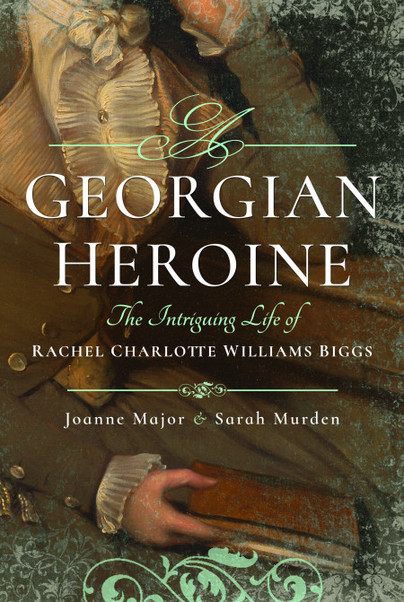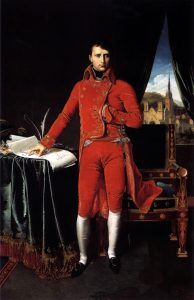 Rachel Charlotte Williams Biggs (c. 1763—1827) lived an incredible life in an age when the world was dominated by men. Joanne Major and Sarah Murden, dedicated historians and authors of several non-fiction books about the Georgian Age, have written an amazing biography about an extraordinary lady. In A Georgian Heroine: The Intriguing Life of Rachel Charlotte Williams Biggs, they uncover the bizarre but true story of Mrs. Biggs, who was a playwright and author, a political pamphleteer and a spy, working for the British Government. It’s a treat for me to present Sarah’s and Joanne’s post about Mrs. Biggs’ connection to the man who plotted to kill Napoleon.
Rachel Charlotte Williams Biggs (c. 1763—1827) lived an incredible life in an age when the world was dominated by men. Joanne Major and Sarah Murden, dedicated historians and authors of several non-fiction books about the Georgian Age, have written an amazing biography about an extraordinary lady. In A Georgian Heroine: The Intriguing Life of Rachel Charlotte Williams Biggs, they uncover the bizarre but true story of Mrs. Biggs, who was a playwright and author, a political pamphleteer and a spy, working for the British Government. It’s a treat for me to present Sarah’s and Joanne’s post about Mrs. Biggs’ connection to the man who plotted to kill Napoleon.
The Plot of the Infernal Machine
The Plot of the Infernal Machine, also known as the Plot of the rue Saint-Nicaise, was a daring plan to end the life of Napoléon Bonaparte who was then the First Consul of France and head of the government.
On Christmas Eve, 1800, the Austrian composer Joseph Haydn’s masterpiece Die Schöpfung (The Creation) was premièring at the Paris Opera and Napoléon and his wife Joséphine together with several guests were to attend. Warned that an attempt on his life was imminent, Napoléon brushed aside the rumours and his party left after dinner to make their way to the opera in two carriages. Napoléon was in the first and in the second travelled Joséphine with her daughter Hortense, Napoléon’s heavily pregnant sister Caroline (the wife of General Joachim Murat) and General Jean Rapp, Napoléon’s aide-de-camp. At the last minute, Rapp decided to rearrange Joséphine’s shawl: it was newly acquired from Constantinople and Rapp thought it would look better worn in the Egyptian fashion (Rapp had served with the French army in Egypt). Napoléon, unwilling to delay, departed ahead in his carriage with a small cavalry escort and, already exhausted, fell asleep during the journey.
Terror on Christmas Eve
Upon entering the rue Saint-Nicaise, Napoléon’s coach was blocked by a horse and cart and his coachman turned into another street. As he did so the cart exploded, rocking Napoléon’s coach and throwing the women in the second coach, which had almost caught up, onto the floor. Joséphine’s carriage suffered more damage than her husband’s and was covered with broken glass from the windows but, other than the shock and some cuts, the entire party was unharmed. Not so the poor people who had unsuspectingly been nearby the cart; it was reported that as many as twelve civilians were killed and thirty more injured, and the surrounding houses were badly damaged too. One of the dead was a 15-year-old girl who had been duped into holding the horse harnessed to the booby-trapped cart and had unwittingly done so; she was found in a gutter on the rue Saint-Nicaise, her clothes and both her arms torn from her body by the blast. Shaken, Napoléon and Joséphine quickly gathered their wits, dusted themselves down and appeared at the opera where they received a standing ovation while the hunt for the perpetrators commenced. Originally it was suspected that Jacobins were behind the attack but soon it became clear that royalist Chouan counter-revolutionaries were responsible.

View of the explosion of the infernal machine on the rue Saint-Nicaise in Paris, Bibliothèque nationale de France
Rachel Charlotte Williams Biggs and the Man Who Plotted to Kill Napoleon
Jean-Baptiste Coster (known as St Victor), a handsome young Frenchman and counter-revolutionary who held staunch royalist sympathies, was one of the plotters. This man would become known to the heroine of our latest biography, Rachel Charlotte Williams Biggs. Charlotte, as she preferred to be called, was secretly involved in the murky world of espionage, working for the British government as a very peculiar form of female spy. Educated in France, she could pass almost as a native and had a myriad of contacts in the country. But there was more to her relationship with St Victor than conspiracies to overthrow or assassinate Napoléon: Charlotte later claimed that he had been the only man she had been in danger of loving since she had been abandoned by her childhood sweetheart… but the guillotine was destined to save her from temptation.
You can discover Charlotte’s amazing life in A Georgian Heroine: The Intriguing Life of Rachel Charlotte Williams Biggs, the bizarre but true story of an astounding woman persevering in a man’s world.
 About Sarah Murden and Joanne Major
About Sarah Murden and Joanne Major
Sarah and Joanne are super sleuths who write – and blog – about the Georgian era (with an occasional foray into the world of the Victorians).
Together, they have co-authored three biographies for Pen & Sword, An Infamous Mistress: The Life, Loves and Family of the Celebrated Grace Dalrymple Elliott, A Right Royal Scandal: Two Marriages That Changed History and the recently released A Georgian Heroine: The Intriguing Life of Rachel Charlotte Williams Biggs.
You can find them on their blog, All Things Georgian.

